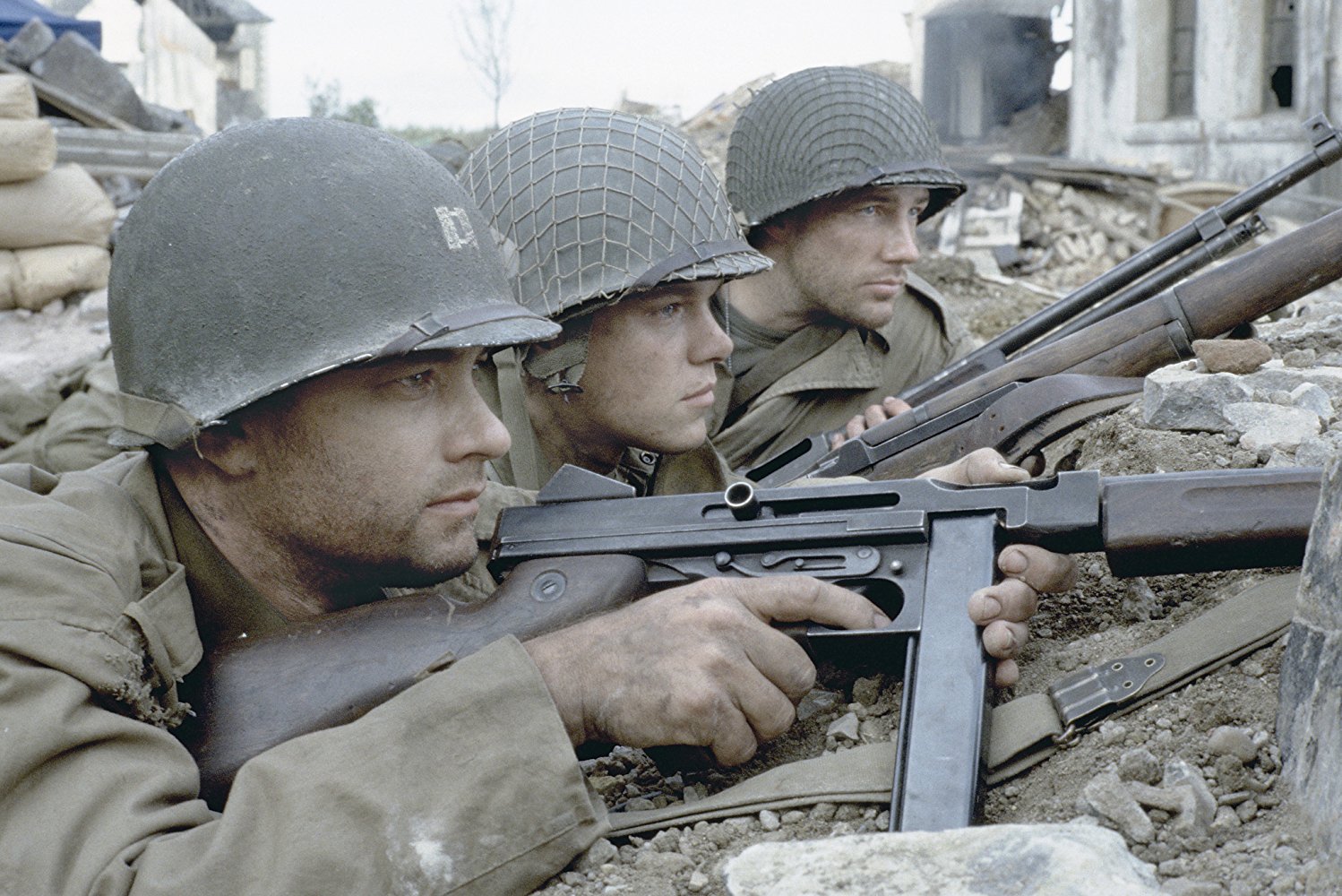
Steven Spielberg’s war film, Saving Private Ryan, not only redefined the genre for war movies but the film holds up on the 20th anniversary.
Twenty years after seeing the film in theaters in 1998, the World War 2 drama features the most intense opening in cinematic history. Following a bookend featuring the older James Ryan (Harrison Young), the opening runs close to a half hour alone. Spielberg manages to recreate the Normandy Invasion of June 6, 1944–in particular, the soldiers landing on Omaha Beach. We’re talking about one of the largest amphibious invasions at the time and it’s perfectly recreated for the big screen.
Once we get to the battle, the film focuses in on Captain John Miller (Tom Hanks) of the 2nd Ranger Battalion. He’s the man who will be tasked with finding Private Ryan (Matt Damon). The film manages to beautifully transition between Washington, Iowa, and France. As he reads President Lincoln’s Bixby letter aloud, Gen. George C. Marshall orders Private Ryan, a solider fighting in the 101st Airborne Division, to be sent home upon learning that his three brothers were dead. Nobody could blame Marshall for making this order as the Ryan family shouldn’t be burdened with losing all of their children.
Three days after D-Day, Miller receives the orders. He chooses six men from the company along with an interpreter. When they find some soldiers of the 101st upon reaching Neuville, they are able to locate a Private James Ryan (Nathan Fillion) of Minnesota, not Iowa. All is not for nothing when the company learns that the James Ryan that they’re looking for is helping defend a bridge in Ramelle.
When they do finally find Ryan, he doesn’t want to go home. Instead, he wants to stay and do the job. Miller and his troops combine forces with Ryan and the paratroopers. The film climaxes in the German attack that lies ahead of them. It’s war and people are going to die. You can’t help but feel heartache for each one of them. The emotions run high knowing that Miller is going to sacrifice his life to bring Ryan home. While all the casualties hurt, the one that hits home the hardest is when a Nazi soldier kills Private Mellish (Adam Goldberg). There were too many Jews being killed across Europe because of the Holocaust. Mellish doesn’t just become another American casualty. He also becomes another fallen Jew because of the Third Reich.
The film starts and ends with James Ryan visiting Captain Miller’s grave. Whether or not these bookends are necessary is hard to say but the emotions hit home. You can see it in Ryan’s eyes when he falls on his knees at the start. I especially love the framing and zooming in on his eyes before we go back in time.
In putting the cast together, Spielberg does his best to put together a company that looks like they would have fought in the war. It’s problematic that there are no people of color. We know from research that they were there despite an Army archivist flat out denying that they were in the battle. This may also extend to some of the racism within the War Department in the 1940s.
When you think about the scenes filmed on water at during the assault of Omaha Beach, it’s also also a testament to Spielberg’s own journey as a filmmaker from shooting on the water in Jaws. Spielberg had grown so much as a director by this point in time. It shows that despite being a blockbuster classic, Jaws was a learning experience. By the late 1990s, Spielberg knew best how to tackle the water scenes. There wasn’t a rubber shark to worry about. Instead, the biggest worry seems to be recreating the historic battle of D-Day. The end result is one of the best cinematic portrayals in history.
Between Spielberg’s direction, Janusz Kamiński’s cinematography, and Michael Kahn’s editing, the end result comes together beautifully in Saving Private Ryan. The hand-held footage gives us the feel of being embedded with the troops. Visually speaking, the bleach bypass really gives off a 1940s vibe. With the action so intense at times, even composer John Williams knows when he needs to step back in his score. This is just one of many reasons as to why Williams is one of the best in his field.
By the time that Saving Private Ryan was filmed, Spielberg was no stranger to making films set during World War 2. The comedic 1941 was followed by Raiders of the Lost Ark, Empire of the Sun, and of course, Schindler’s List. The biggest tragedy of all was losing Best Picture to Shakespeare in Love.
One of the greatest war movies ever, the legacy of Saving Private Ryan is a genre redefined.
DIRECTOR: Steven Spielberg
SCREENWRITER: Robert Rodat
CAST: Tom Hanks, Edward Burns, Matt Damon, Tom Sizemore, Jeremy Davies, Vin Diesel, Adam Goldberg, Barry Pepper, Giovanni Ribisi, Dennis Farina, Ted Danson, Bryan Cranston, Nathan Fillion, Paul Giamatti





